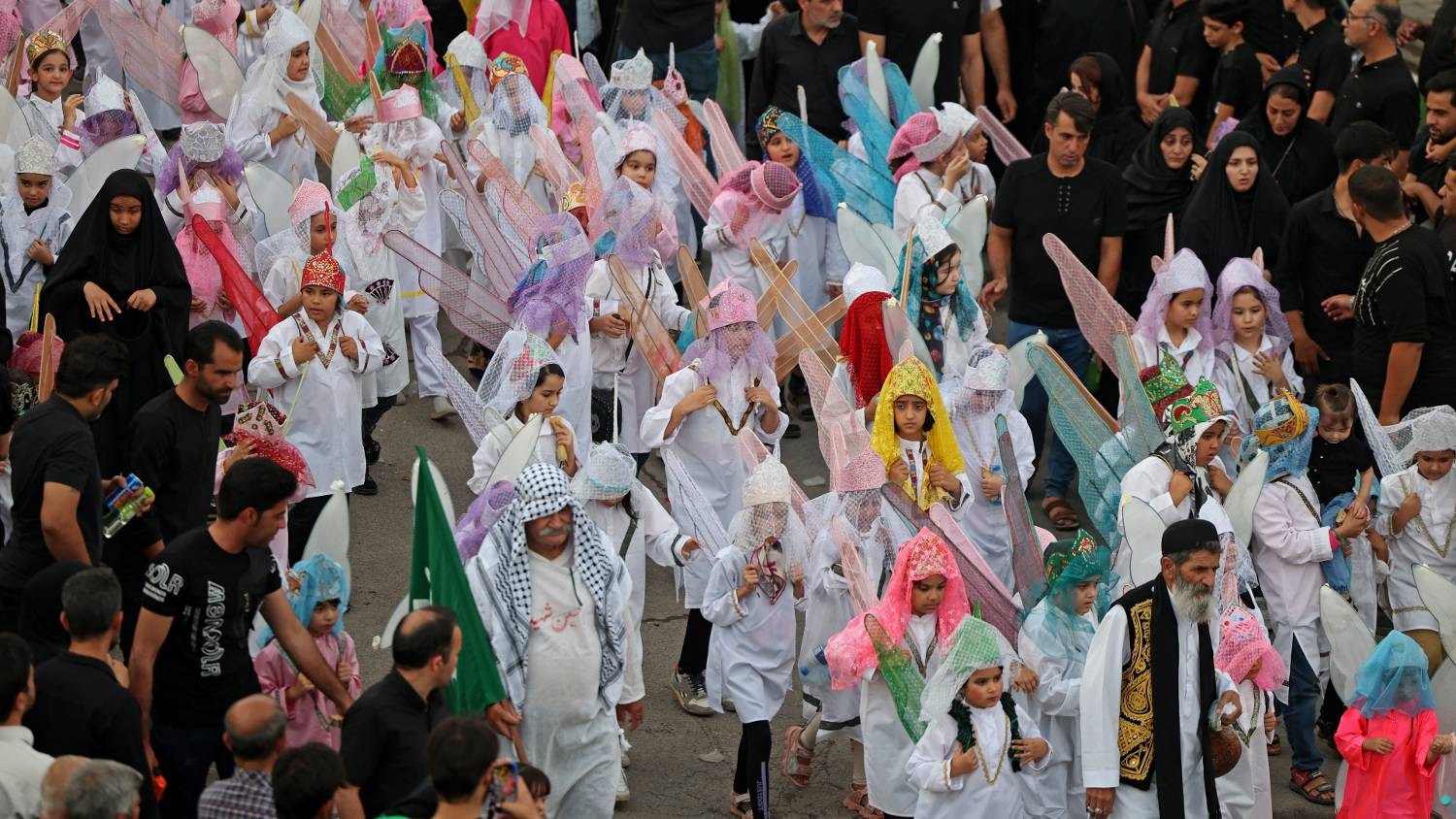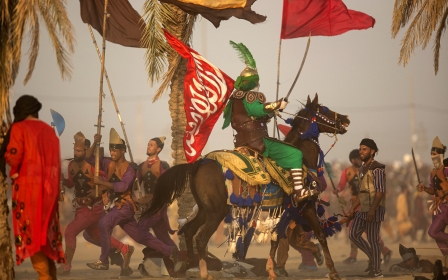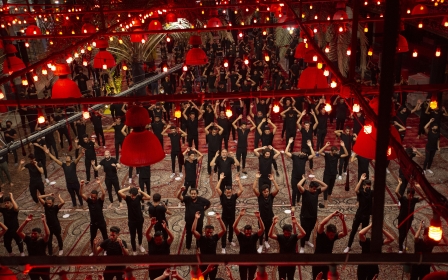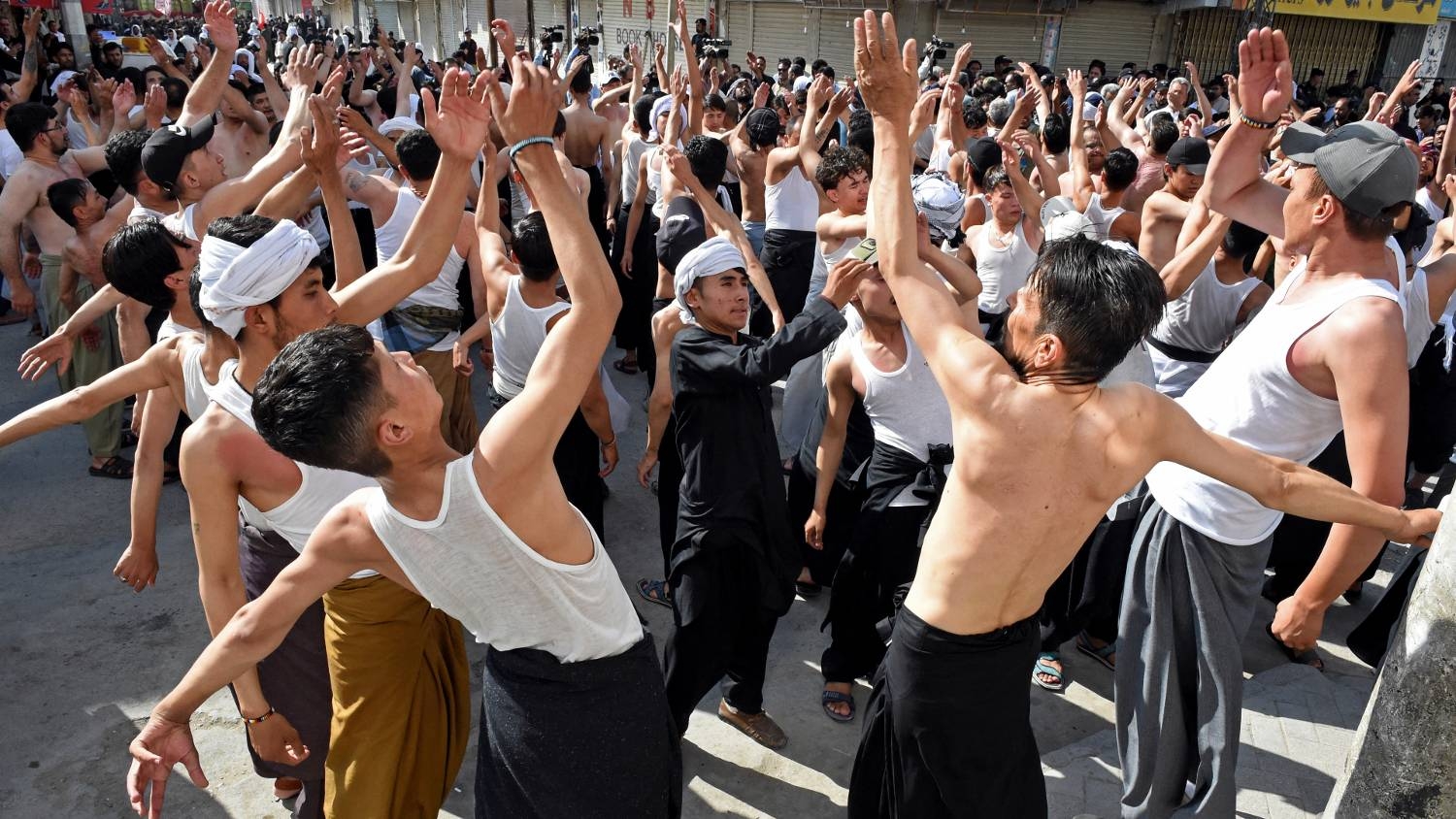
In pictures: Shia Muslims take part in Muharram gatherings in run up to Ashura
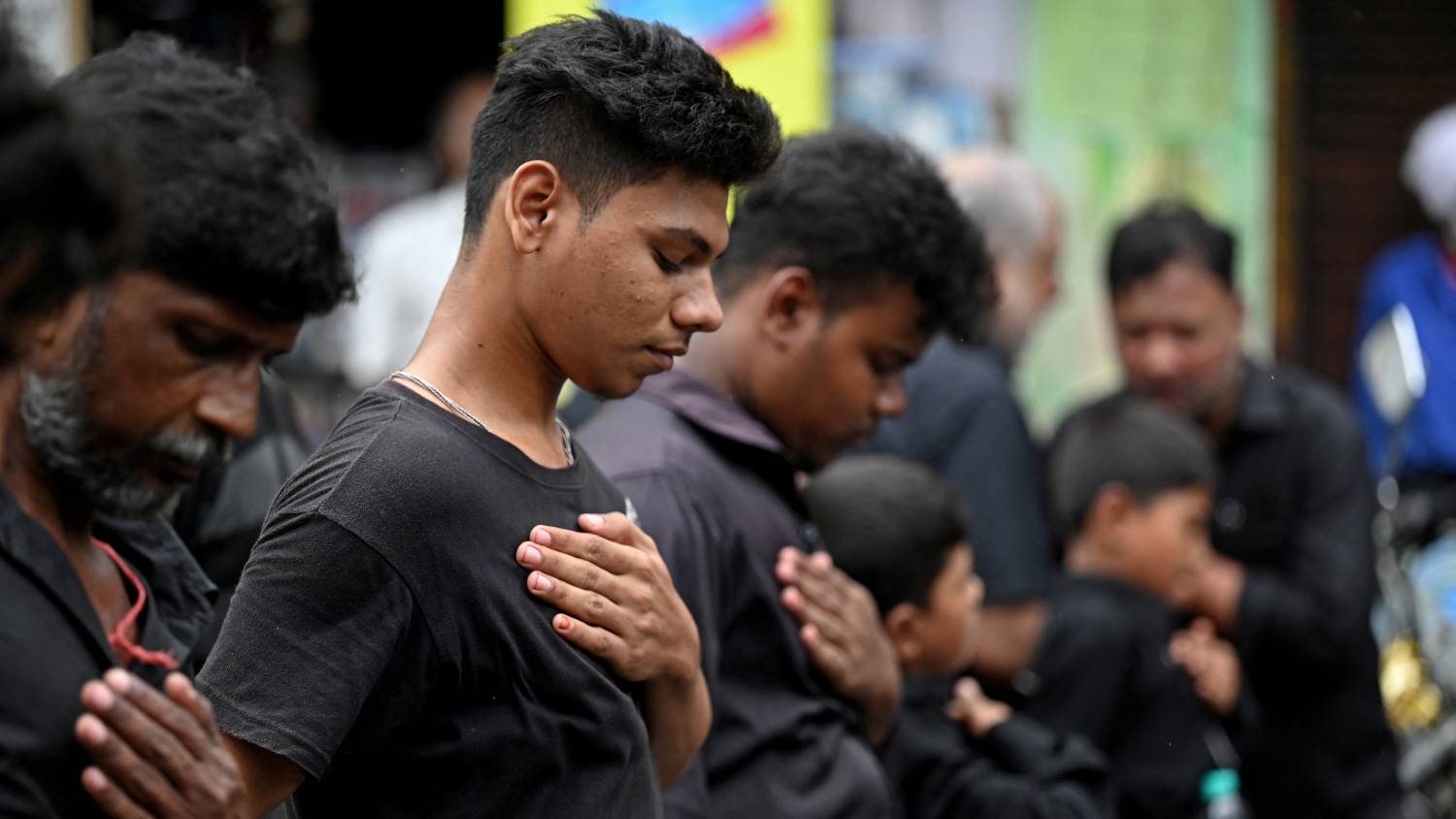
On the 10th day of Muharram, Shia Muslims around the world commemorate the death anniversary of Imam Hussein ibn Ali, the grandson of Prophet Muhammad. He was killed in the seventh century at Karbala in a battle against forces loyal to the Umayyad caliph Yazid. Known as Ashura, the day holds great significance for both Sunni and Shia Muslims for reasons besides the death of Imam Hussein. In the Islamic tradition, it is said to be the same day Noah left the ark, as well as the day Moses crossed the Red Sea and was saved from the pharaoh. The tradition of fasting on Ashura stems from the Jewish tradition of fasting on the 10th day of the month of Tishri, or Yom Kippur. (All images from AFP)
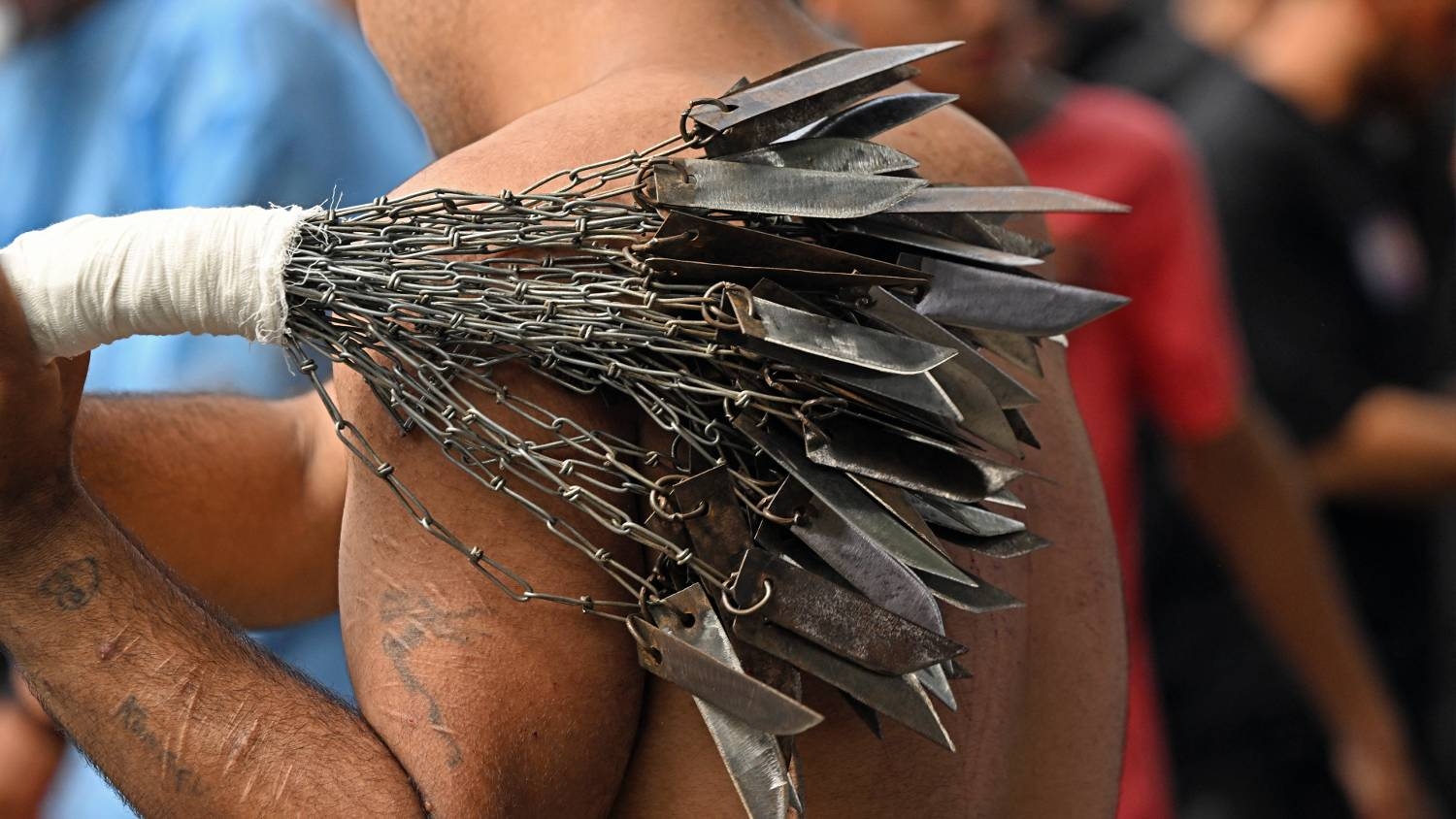
Sunni Muslims usually spend the day fasting, as recommended by Prophet Muhammad, and also offer special prayers. Shia Muslims also increase prayer and worship, but in some communities it's the rememberance of Hussein's death that takes centre stage. Some repeatedly beat their chests or faces in a ritual known as "latmiya" or "matam". Others self-flagellate, in a tradition called "tatbir", using whips or blades, like this man in Indian-administered Kashmir. The physical pain felt from such acts is thought to be reflective of the deeper inner pain of Hussein's killing.

The ritual of tatbir, or blood-letting is also said to symbolise the innocent blood spilt in killing Imam Hussein. Here, light scars are visible on the back of this worshipper in Basra, Iraq. Shia authorities are divided on the theological justification for the practice, and some senior clerics, such as Iran's Supreme Leader Ayatollah Ali Khameini, have expressed their opposition to it.

Mourning over the death of Imam Hussein starts at the beginning of Muharram, building up to a crescendo on the 10th day. In this picture, worshippers gather for a collective prayer in Basra, some 500km from the site of the Battle of Karbala. The lead up to Ashura is marked with processions and passion plays reenacting Hussein's death and the battle itself.
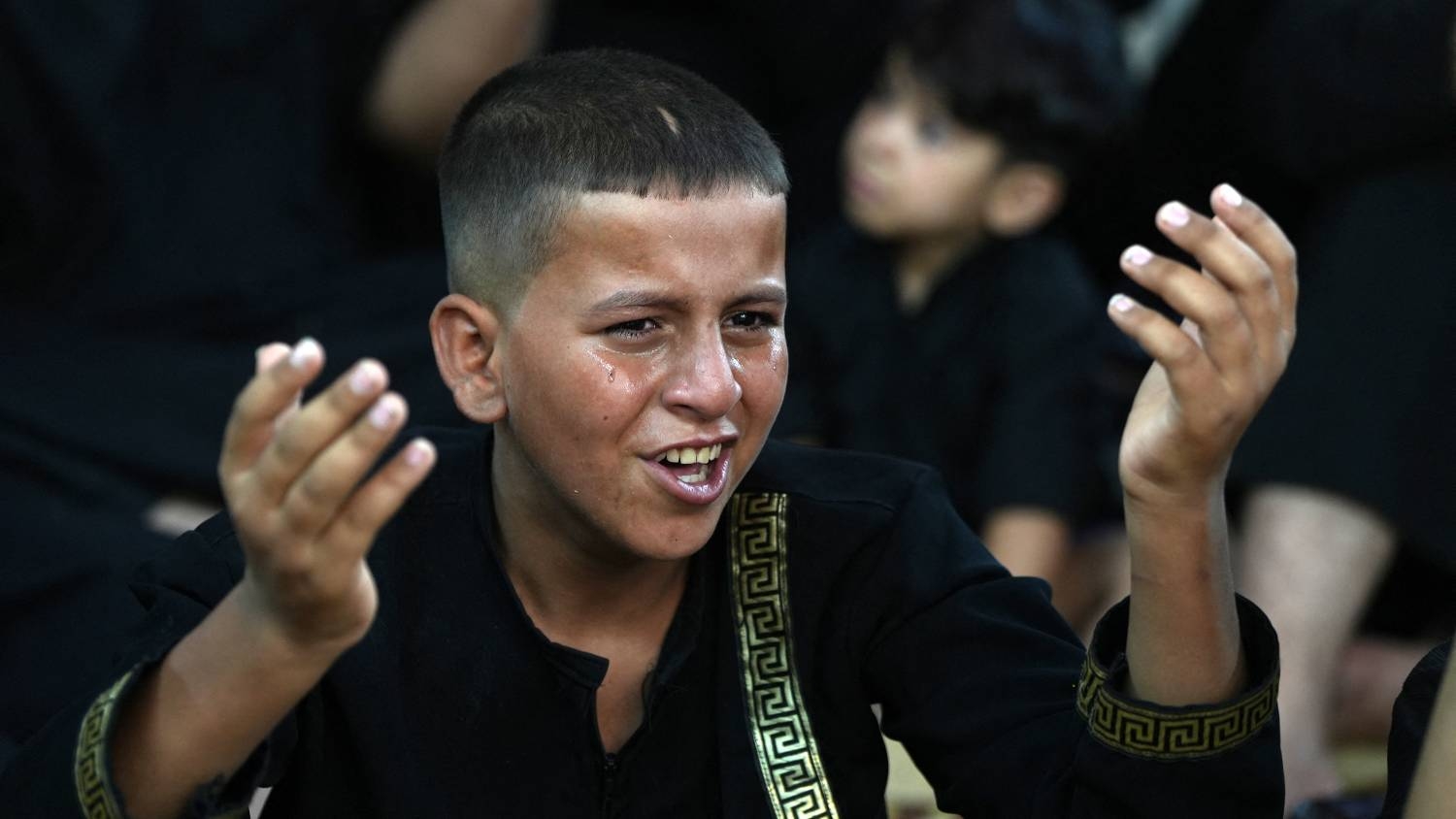
Imam Hussein's death was initially marked by the three days of mourning as is customary in Islam. Under Abbasid rule, his death started to be marked publicly. Shia Muslims believe Imam Hussein was divinely appointed by God, and emotions can run high when remembering him, like at this gathering in Nasiriyah, Iraq.
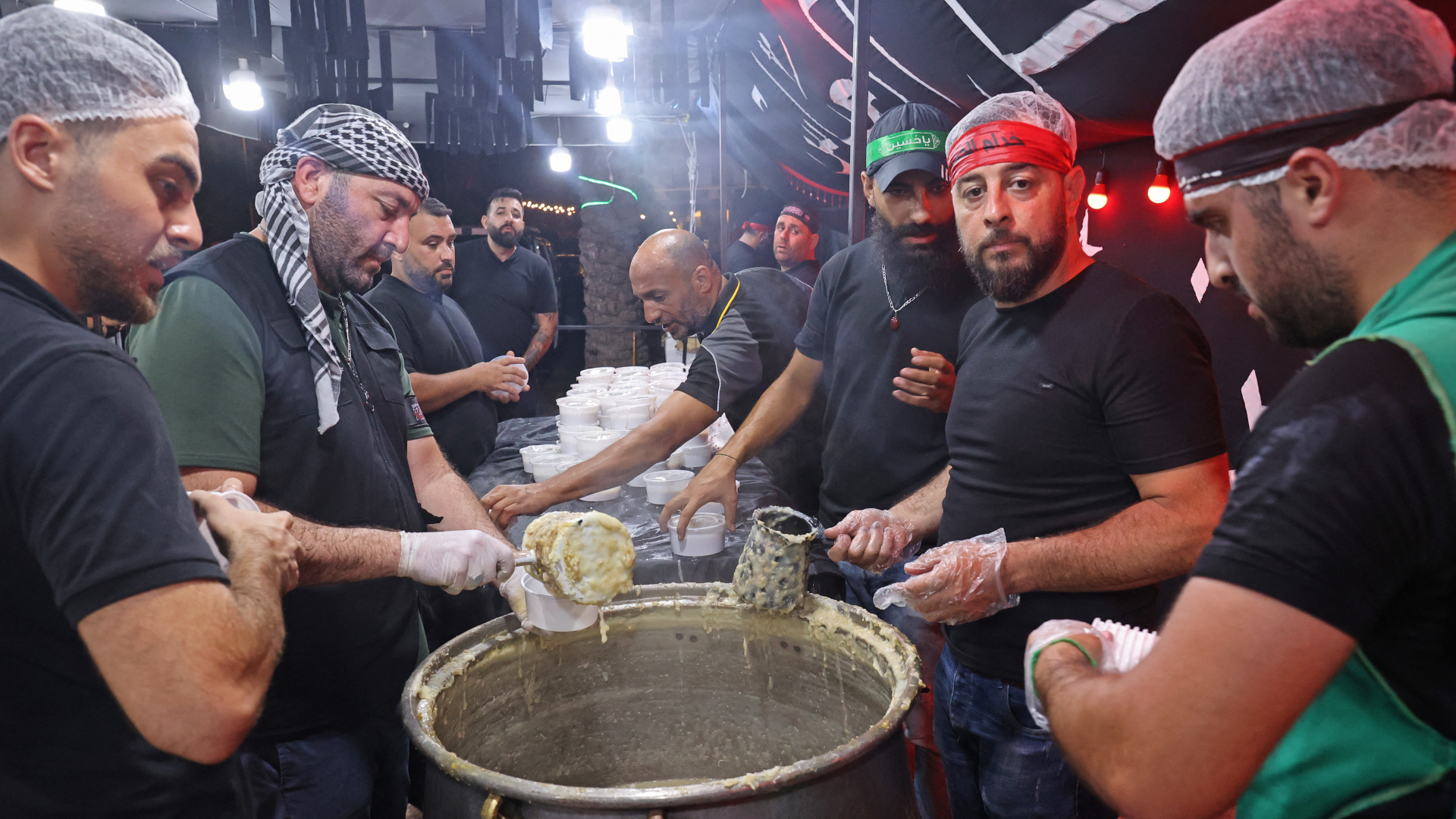
Harees, or slow-cooked ground wheat and meat, was said to be a favoured dish of Imam Hussein's. It's also popularly served during a period of mourning and is often cooked during the fisrt 10 days of Muharram, like by these men in Beirut, Lebanon.
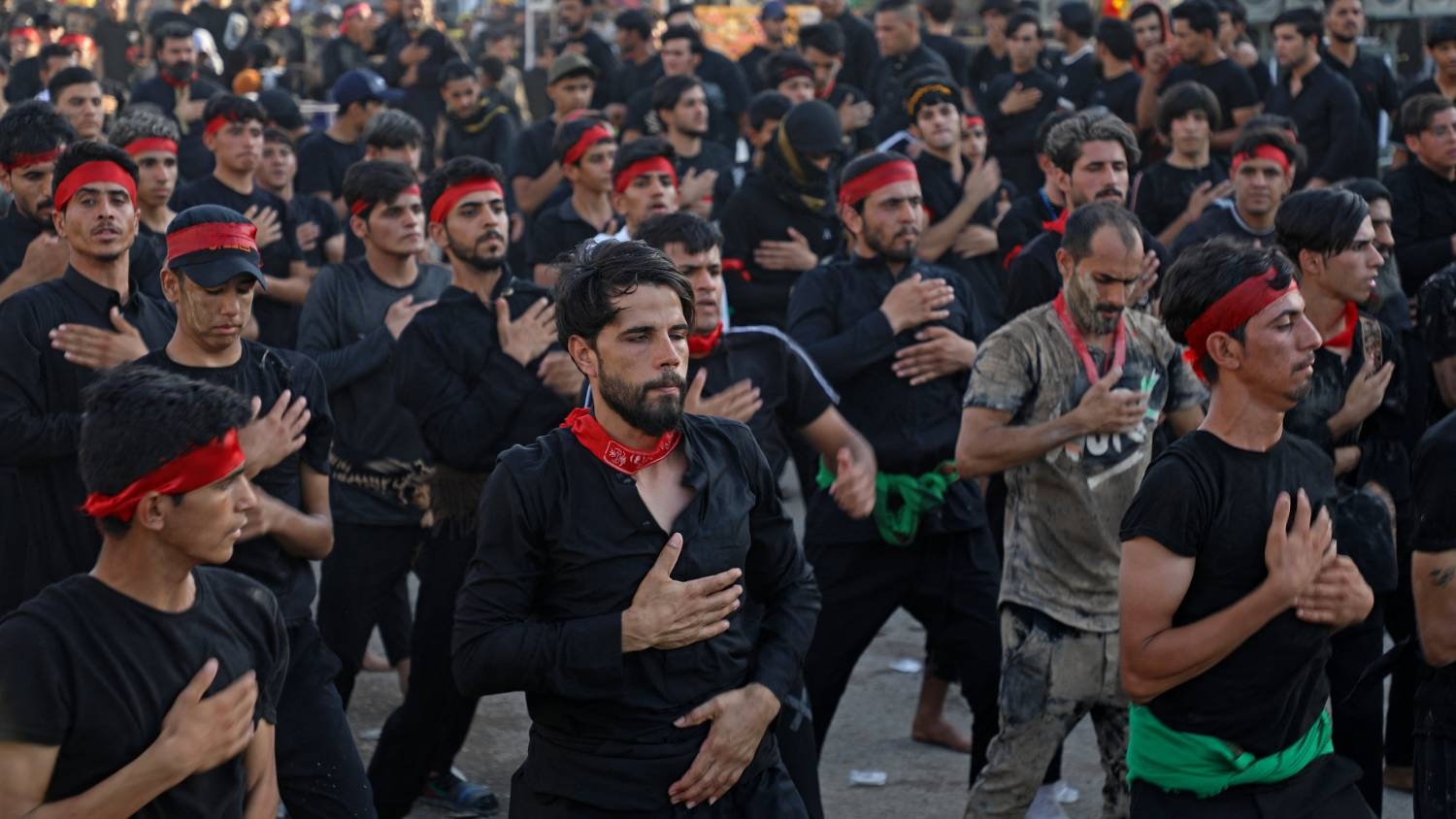
Shia Muslims beat themselves on their chests during a procession in Iraq. The black outfits worn by the men represent a state of continuous mourning and the red headbands represent the blood of Imam Hussein and his family. In Shia Muslim tradition, Hussein is the archetypal martyr and his death is seen as a sacrifice for the Muslim ummah, or nation.
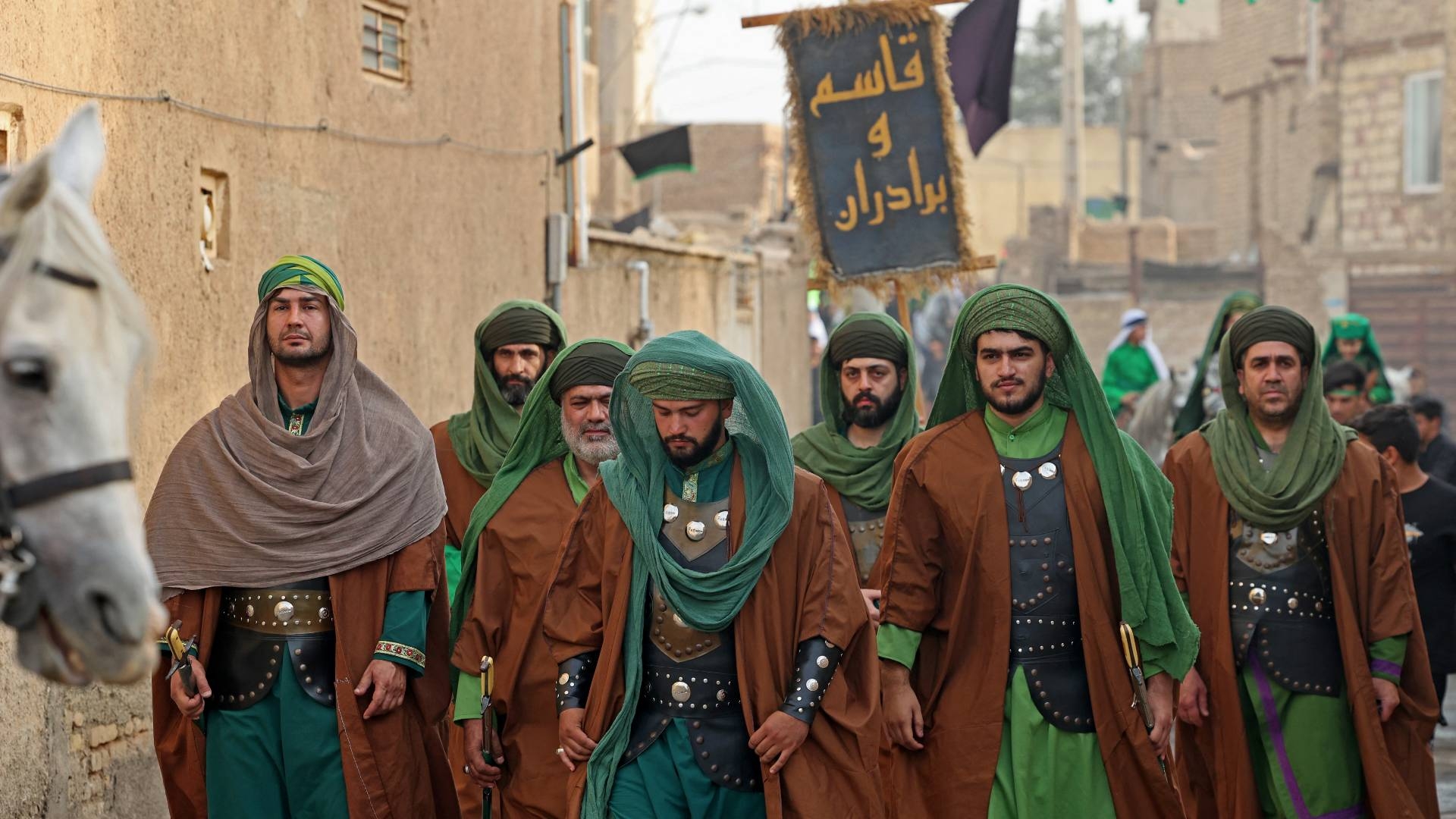
Some communities, like this one in Nushabad in Iran's Isfahan province, dress up as part of a procession to remember the events of the year 680. The procession is part of a reenactment known as shabih, where Imam Hussein's journey to Karbala is retold.
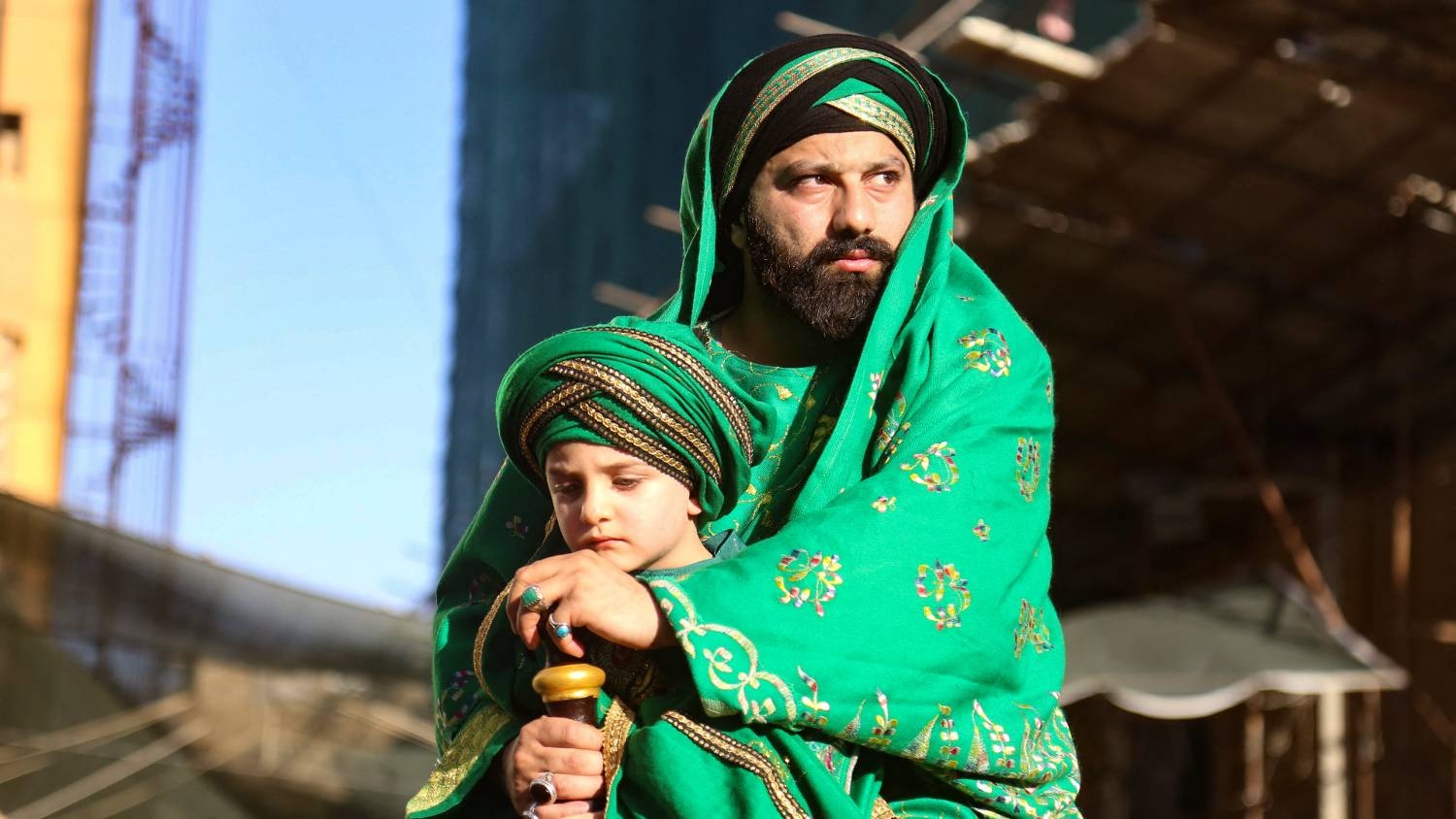
Before his arrival in Karbala, Imam Hussein had travelled to the Iraqi city of Kufa to gather supporters for his struggle against Yazid. Things did not go to plan as the help he was expecting from the people of Kufa did not materialise. As a result he headed to meet the Umayyad force at Karbala with a weakened military force of his own. After his death, Imam Hussein was buried in Karbala, where worshippers visit his grave to this day. Here, a father and child in Karbala pay tribute to Imam Hussein.
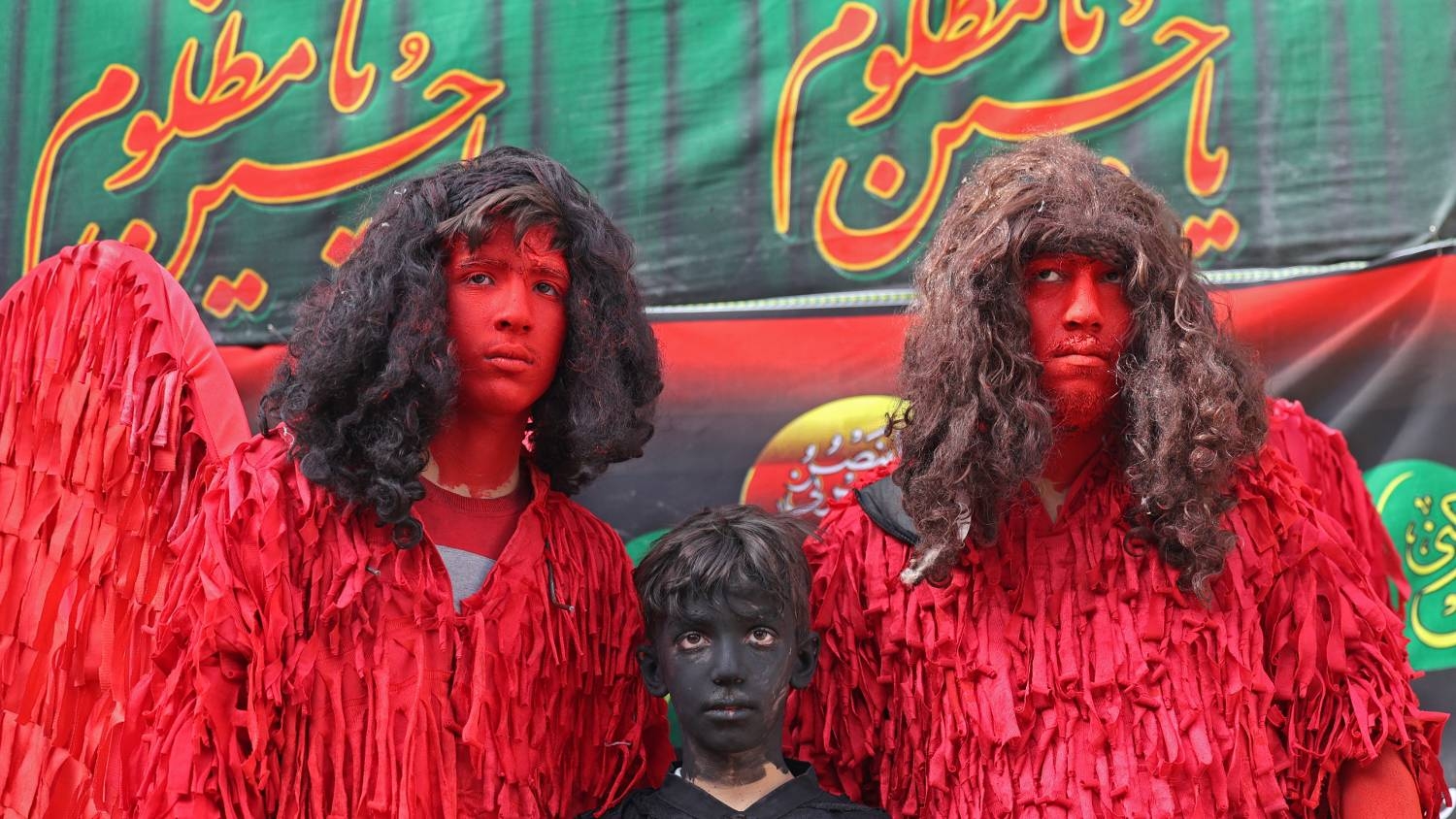
Ta'zieh, or martyr plays, are popular in parts of Iran, and are used as a way of storytelling. In this community in Nushabad, two men and a boy dress up as demons and spirits. In Shia Muslim tradition, the events at Karbala are seen as a battle between good and evil.
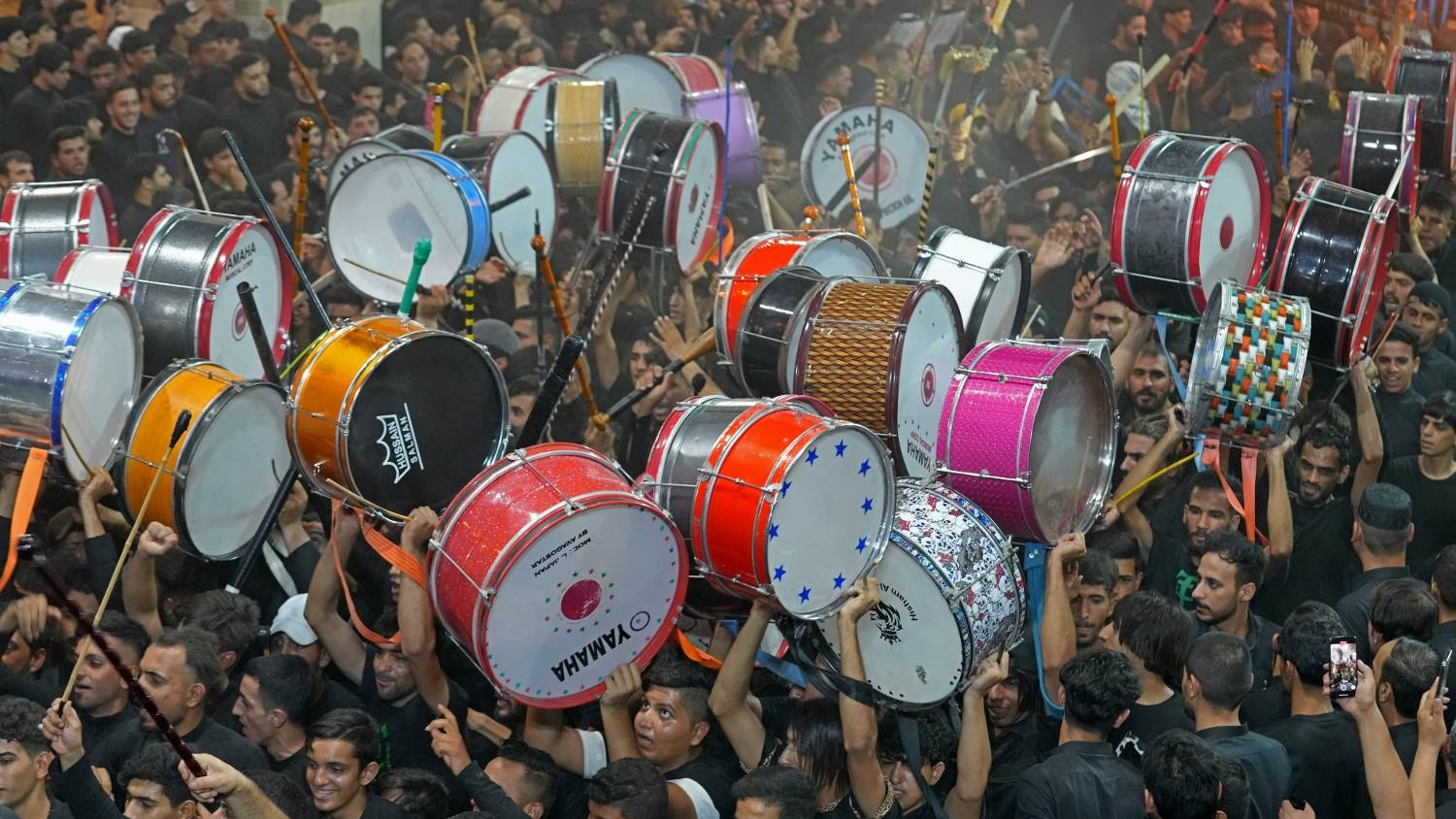
Worshippers in the Iraqi city of Najaf play drums during a procession marking the Battle of Karbala and the death of Imam Hussein.
Middle East Eye delivers independent and unrivalled coverage and analysis of the Middle East, North Africa and beyond. To learn more about republishing this content and the associated fees, please fill out this form. More about MEE can be found here.


